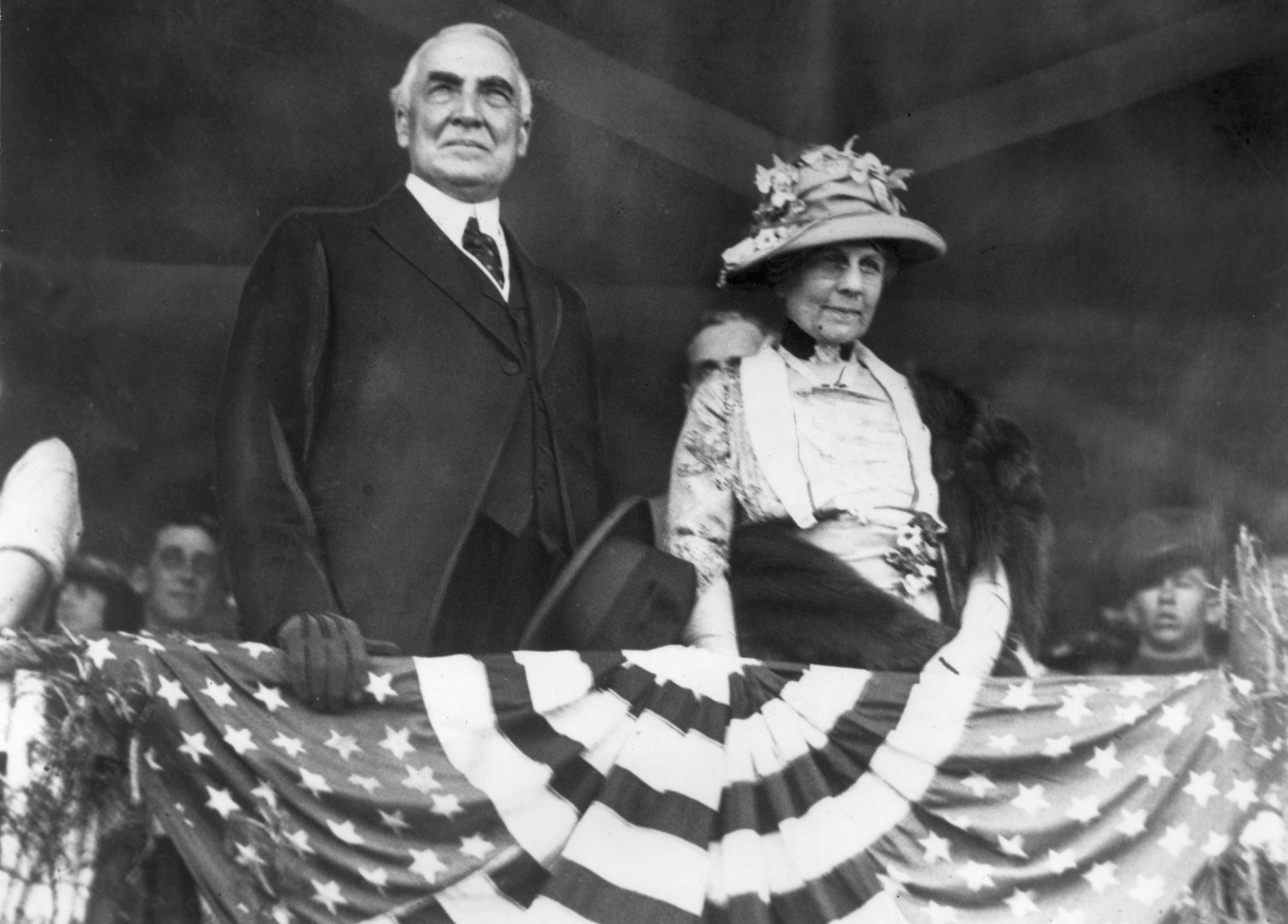One hundred years ago Wednesday, on Aug. 2, 1923, President Warren G. Harding died inside San Francisco’s Palace Hotel—an opulent place for visiting dignitaries, then as now.
Or so the historical record says, anyway. According to the House of Shields, among the oldest and most regal bars in San Francisco and directly across New Montgomery Street from the Palace, Harding snuck out of the hotel via tunnel and died at the bar in the company of his mistress. Officially, House of Shields will neither confirm nor deny the existence of any subterranean passages, but Harding was a well-known philanderer with a taste for drink, and Prohibition required utmost discretion.
Harding’s photo remains prominently displayed, and a cocktail on the menu called the “Warren G.”—a winking pun on the 1990s West Coast rapper—is made with Fernet. A House of Shields bartender said he wasn’t positive about the 115-year-old bar’s lore, but confirmed that the entrance to the tunnel was sealed off in the ’70s once the conduit was repurposed for sewage.
Harding, a newspaper publisher and later a Republican senator from Ohio, was in San Francisco because his administration had run aground. Elected in 1920 with a massive share of the popular vote—60-34—that no one has ever matched since, Harding’s promised “return to normalcy” was sputtering in the face of opposition to his economic policies, and his veto of the so-called Bonus Bill intended to help unemployed veterans of World War I was unpopular.
A gregarious man who loved to smoke, drink, philander and travel, Harding was on a tour of the West during the summer of 1923, hoping to shore up support for his vision of the U.S. as a major world power—the topic of his final, undelivered address.
The first sitting president to visit Canada and Alaska, he began complaining of gastrointestinal problems during a heat wave and arrived in San Francisco by train on July 29 an exhausted, deeply unwell man. Physicians diagnosed ptomaine poisoning, allegedly from tainted crab meat, and he may have had pneumonia. On the evening of Aug. 2, First Lady Florence Harding was reading aloud to him, and his last words were reportedly “That’s good. Go on, read some more.” At 7:20 p.m., Harding died—fittingly enough, in the Presidential Suite.
As Florence Harding would not consent to an autopsy, conspiracies about her husband’s death swirled, including theories about murder and suicide. But today, historians largely agree that heart problems did the 57-year-old president in.
A throne and accompanying plaque in the lobby commemorate King Kalakaua, a Hawaiian monarch who died in 1891 in the old Palace Hotel, which was destroyed in the 1906 earthquake. Nothing similar acknowledges the demise of the 29th president. Hotel staff directed The Standard’s inquiries to the hotel’s small museum, where archival photographs and newspaper clippings devote more fanfare to Dwight D. Eisenhower’s later visits.
It was only after his death that Harding’s extramarital affairs and illegitimate child came to light. Same goes for his administration’s misdeeds—namely, Teapot Dome, a bribery scheme involving oil leases and an unscrupulous interior secretary. Until Watergate more than 50 years later, it had been considered the most sensational episode of corruption in American political history. Historians judge Harding’s two years and four months in office unsparingly, and he is generally ranked among the lowest tier of U.S. presidents.
Harding also remains the only president to die in San Francisco, although Sara Jane Moore attempted to assassinate Gerald Ford outside the St. Francis Hotel in 1975.
The date of Harding’s death came on a significant San Francisco-related anniversary, too. Scottish-born engineer Andrew Hallidie had introduced cable cars in San Francisco on Aug. 2, 1873, exactly 50 years before.
